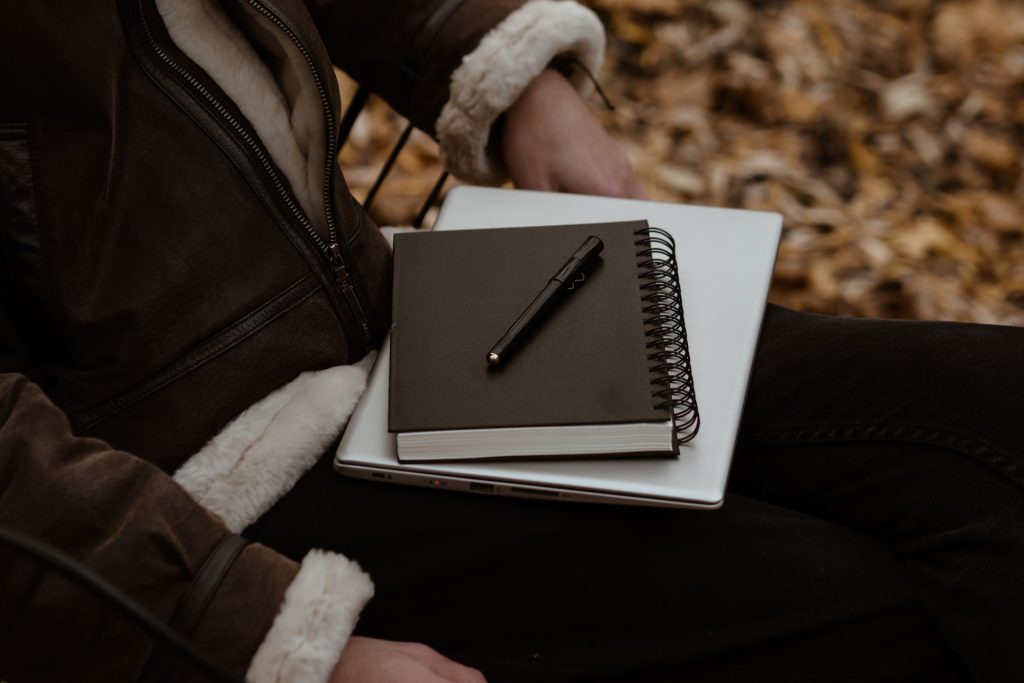After working with college students for 20 years and more recently in the past few years with clients, I’ve seen, time and again, the resistance to—and more importantly, the fear of—writing.
This fear is often deeply embedded due to past experiences, some of which come from childhood. Sometimes the fear is of not feeling capable of taking on something so seemingly daunting as writing a novel due to the mass of information that needs to be understood, compiled, reconciled, and of course, written.
It recently occurred to me that, maybe, approaching novel writing with an epistolary approach—a story told in letters (and a variety of other mediums)—which can be, in theory, bitten off in smaller pieces.
Of course, we still need to achieve the overarching story arc and character arcs expected in novels, but thinking about writing a novel one letter at a time just might take the pressure off for some.
If this sounds appealing or intriguing to you, take a look at this list of 180 epistolary examples. Maybe check a few of them out, see how they’re done, and start one of your own.
Below the list, you’ll find one of my most recent YouTube videos about the epistolary novel.
(Note: Almost all of the titles listed below link to Amazon.com. This is in no way an endorsement of Amazon, nor is it a suggestion that you buy any of these titles from Amazon. It was simply the most convenient place find the titles and provide a synopsis so you can see which titles interest you. If, like me, you prefer to support local bookstores, you can always find titles that interest you here and buy them elsewhere. Also, this statement is in no way meant to be a critique of people who choose to buy from Amazon. To each, their own.)
- Love Letters between a Nobleman and His Sister by Aphra Behn (1684)
- Pamela by Samuel Richardson (1740)
- Letters from a Peruvian Woman by Françoise de Graffigny (1747)
- Julie or the New Heloise by Jean-Jacques Rousseau (1761)
- The Expedition of Humphry Clinker by Tobias Smollett (1771)
- Evelina by Frances Burney (1778)
- Les Liaisons dangereuses by Pierre Choderlos de Laclos (1784)
- Aline and Valcour by Marquis de Sade (1795)
- Hyperion by Friedrich Hölderlin (1797)
- The Sorrows of Young Werther by Johann Wolfgang von Goethe (1799)
- The Wild Irish Girl by Sydney Owenson (1806)
- Persuasion by Jane Austen (1817)
- Letters of Two Brides by Honoré de Balzac (1841)
- Poor Folk By Fyodor Dostoyevsky (1846)
- The Tenant of Wildfell Hall by Anne Brontë (1848)
- The Woman in White by Wilkie Collins (1859)
- Lady Susan by Jane Austen (1871)
- Dracula by Bram Stoker (1897)
- The American Diary of a Japanese Girl by Yone Noguchi (1901)
- The Kempton-Wace Letters by Jack London (1903)
- Daddy Long Legs by Jean Webster (1912)
- Letters From Skye by Jessica Brockmole
- Dear Enemy by Jean Webster (1915)
- You Know Me Al: A Busher’s Letters by Ring Lardner (1916)
- Zoo, or Letters Not About Love by Viktor Shklovsky (1923)
- Givi Shaduri by Mikheil Javakhishvili (1928)
- Farthing Hall by Hugh Walpole and J.B. Priestley (1929)
- The Documents in the Case by Dorothy L. Sayers and Robert Eustace (1930)
- Anne of Windy Poplars by Lucy Maud Montgomery (1936)
- Screwtape Letters by C.S. Lewis (1942)
- I Capture the Castle by Dodie Smith (1948)
- Short stories about the Glass family by J.D. Salinger (1953)
- Houseboy by Ferdinand Oyono (1956)
- The Key (Kaji) by Jun’ichiro Tanizaki (1956)
- Kagi by Jun’ichiro Tanizaki (1956)
- Flowers for Algernon by Daniel Keyes (1959)
- Short stories about the Glass family by J.D. Salinger (1961)
- Short stories about the Glass family by J.D. Salinger (1963)
- Up the Down Staircase by Bel Kaufman (1964)
- Harriet the Spy by Louise Fitzhugh (1964)
- Herzog by Saul Bellow (1964)
- Up the Down Staircase by Bel Kaufman (1965)
- Silence by Shusaku Endo (1966)
- The Feverhead by Wolfgang Bauer (1967)
- Ada by Vladimir Nabokov (1969)
- 84, Charing Cross Road by Helene Hanff (1970)
- Go Ask Alice by Anonymous (1971)
- Carrie by Stephen King (1974)
- Letters of Insurgents by Sophia Nachalo and Yarostan Vocheck, as told by Fredy Perlman
- A Woman of Independent Means by Elizabeth Forsythe Hailey (1978)
- Letters by John Barth (1979)
- Shikasta by Doris Lessing (1979)
- So Long a Letter (Une si longue letre) by Mariama Bâ (1981)
- The Color Purple by Alice Walker (1982)
- Dear Mr. Henshaw by Beverly Cleary (1983)
- The Adrian Mole Diaries by Sue Townsend (1985)
- Letters to Alice: On First Reading Jane Austen by Fay Welden(1985)
- The Jolly Postman by Allan Ahlberg and Janet Ahlberg (1986)
- Black Box by Amos Oz (1986)
- Juletane by Myriam Warner-Vieyra (1987)
- Memoirs of an Invisible Man by H.F. Saint (1987)
- The Facts by Philip Roth (1988)
- Fair and Tender Ladies by Lee Smith (1988)
- Sorcery and Cecelia or The Enchanted Chocolate Pot by Caroline /Stevermer and Patricia Wrede (1988)
- The Trick of It by Michael Frayn (1989)
- Absolutely Normal Chaos by Sharon Creech (1990)
- So Long a Letter (Une si longue lettre) by Mariama Bâ (1990)
- Letters from the Inside by John Marsden (1991)
- Possession by A.S. Byatt
- Griffin and Sabine by Nick Bantock (1991)
- Nothing but the Truth by Avi (1991)
- Letters from Rifka by Karen Hesse (1992)
- Parable of the Sower by Octavia E. Butler (1993)
- “Manners of Dying” (short story) by Yann Martel (1993)
- Youth in Revolt by C.D. Payne (1993)
- Microserfs by Douglas Coupland (1995)
- The Prestige by Christopher Priest (1995)
- Two Solitudes (short story) by Carl Steadman (1995)
- Zenzele: A Letter for my Daughter by J. Nozipo Maraire (1996)
- Bridget Jones’s Diary by Helen Fielding (1996)
- The Pull of the Moon by Elizabeth Berg (1996)
- Going Solo by Hope Keshubi (1997)
- Freedom and Necessity by Emma Bull and Steven Brust (1997)
- The Fan by Bob Randall (1997)
- Jazmin’s Notebook by Nikki Grimes (1998)
- Parable of the Talents by Octavia E. Butler (1998)
- Last Days of Summer by Steve Kruger (1998)
- Speak by Laurie Halse Anderson (1999)
- The Perks of Being a Wallflower by Stephen Chbosky (1999)
- Ender’s Shadow Saga by Orson Scott Card (1999)
- Inconceivable by Ben Elton (1999)
- The Fox Woman by Kij Johnson (1999)
- Home Thoughts by Tim Parks (1999)
- Feeling Sorry for Cecelia by Jaclyn Moriarty (2000)
- House of Leaves by Mark Z. Danielewski (2000)
- The Princess Diaries by Meg Cabot (2000)
- e by Matt Beaumont (2000)
- The Plant by Stephen King (2000)
- Tarzan’s Tonsillitis by Alfredo Bryce Echenique (2001)
- Ella Minow Pea by Mark Dunn (2001)
- Mr. Mee by Andrew Crumey (2001)
- P.S. He’s Mine! By Rosie Rushton and Nina Schindler (2001)
- The Boy Next Door (#1) by Meg Cabot (2002)
- La silla del águila (The Eagle’s Throne) by Carlos Fuentes (2002)
- The Year of Secret Assignments by Jaclyn Moriarty (2003)
- We Need to Talk about Kevin by Lionel Shriver (2003)
- The My Dearest Letters by Rodger Morrison (2003)
- The Egyptologist by Arthur Phillips (2004)
- Love, Rosie by Cecelia Ahern (2004)
- TTYL by Lauren Myracle (2004)
- Gilead by Marilynne Robinson (2004)
- Boy Meets Girl (#2) by Meg Cabot (2004)
- Ibid: A Life by Mark Dunn (2004)
- Almost Like Being in Love by Steve Kluger (2004)
- Cloud Atlas by David Mitchell (2004)
- The Grand Tour by Carolin Stevermer and Patricia Wrede (2004)
- The Historian by Elizabeth Kostova (2005)
- Upstate by Kalisha Buckhanon (2005)
- March by Geraldine Brooks (2005)
- Every Boy’s Got One (#3) by Meg Cabot (2005)
- Bloodline by Kate Cary (2005)
- Who Moved My Blackberry? by Lucy Kellaway (2005)
- The Book of Renfield by Tim Lucas (2005)
- World War Z by Max Brooks (2006)
- Where Rainbows End by Cecelia Ahern (2006)
- Eleven by David Llewellyn (2006)
- The Beatrice Letters by Lemony Snicker (2006)
- The Mislaid Magician or Ten Years After by Caroline Stevermer and Patricia Wrede (2006)
- The Absolutely True Diary of a Part-Time Indian by Sherman Alexie (2007)
- Book of a Thousand Days by Shannon Hale (2007)
- The Gum Thief by Douglas Coupland (2007)
- The White Tiger by Aravind Adiga (2008)
- The Guernsey Literary and Potato Peel Pie Society by Mary Ann Shaffer and Annie Barrows (2008)
- From A to X: A Story in Letters by John Berger (2008)
- Dear Everybody by Michael Kimball (2008)
- The Letters by Luanne Rice and Joseph Monger (2008)
- Overqualified by Joey Comeau (2009)
- Voss by David Ives (2009)
- Treehouse: A Found E-mail Love Affair by Joseph Alan Wachs and Jason Alan Franzen (2009)
- Richard Yates by Tao Lin (2010)
- Life Form by Amélie Nothomb (2010)
- Super Sad True Love Story by Gary Shteyngart (2010)
- Attachments by Rainbow Rowell (2011)
- The Antagonist by Lynn Coady (2011)
- Why We Broke Up by Daniel Handler (2011)
- The Islanders by Christopher Priest (2011)
- Frances & Bernard by Carlene Bauer (2012)
- Code Name Verity by Elizabeth Wien (2012)
- Aeternum Ray by Tracy R Atkins (2012)
- Dear Mr Knightley by Katherine Reay (2013)
- Where’d You Go Bernadette by Maria Semple (2013)
- A Tale for the Time Being by Ruth Ozeki (2013)
- Permission by SD Chrostowska (2013)
- The Closeness That Separates Us by Katie Hall and Bowen Jones (2013)
- September Ends by Hunter S Jones (2013)
- Texts from Bennet by Mac Lethal (2013)
- Love Letters to the Dead by Ava Dellaira (2014)
- Gabi, a Girl in Pieces by Isabel Quintero (2014)
- To All the Boys I’ve Loved Before by Jenny Han (2014)
- Dear Committee Members by Julie Schumacher (2014)
- Texts from Jane Eyre by Mallory Ortberg (2014)
- Vanessa and Her Sister by Priya Parmar (2014)
- The Divorce Papers by Susan Rieger (2014)
- Every Blade of Grass by Thomas Wharton (2014)
- Illuminae by Amie Kaufman and Jay Kristoff (2015)
- The Martian by Andy Weir (2015)
- The Devourers by Indra Das (2015)
- Dear Mrs. Naidu by Mathangi Subramanian (2015)
- Everything, Everything by Nicola Yoon (2015)
- The Incarnations by Susan Barker (2015)
- Bats of the Republic by Zachary Thomas Dodson (2015)
- How to Party With an Infant by Kaui Hart Hemmings (2016)
- Sleeping Giants by Sylvain Nèuvel (2016)
- Not a Self-Help Book: The Misadventures of Marty Wu by Yi Shun Lai (2016)
- The Boy is Back (#4) by Meg Cabot (2016)
- Dracula vs. Hitler by Patrick Sheane Duncan (2016)
- Gemina (Illuninae Files #2) by Arnie Kaufman and Jay Kristoff (2016)
- The Rise and Fall of D.O.D.O. by Neal Stephenson and Nicole Galland (2017)
- Obsidio (Illuminae Files, #3) by Arnie Kaufman and Jay Kristoff (2018)
- This is How You Lose the War by Amal El-Mohtar and Max Gladstone (2019)
If you know of other epistolary novels not mentioned in this list, please leave them in the comments below, and I’ll add them to the list.
Sending you mad writing mojo…
Happy writing!
Johnnie
OOOO







